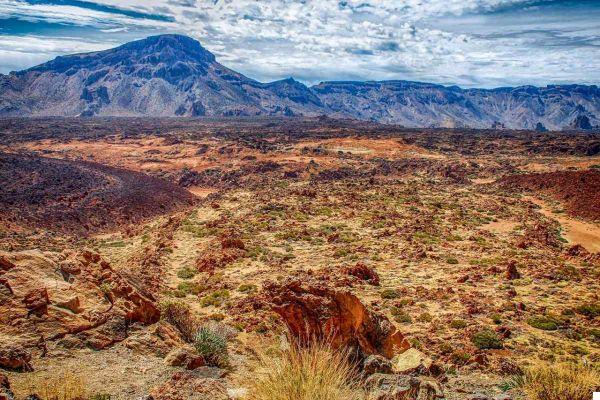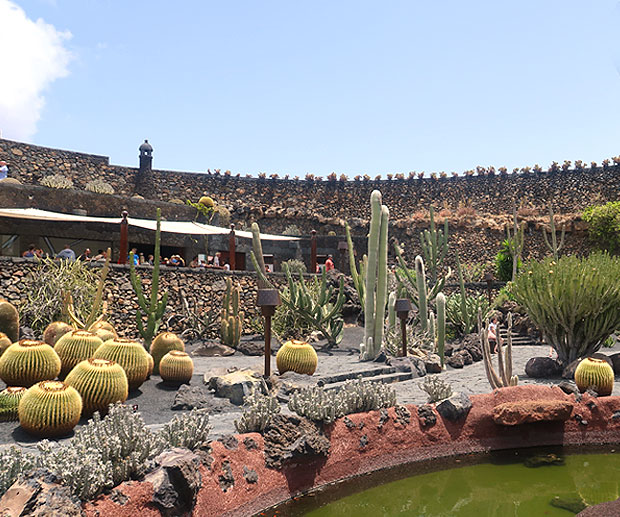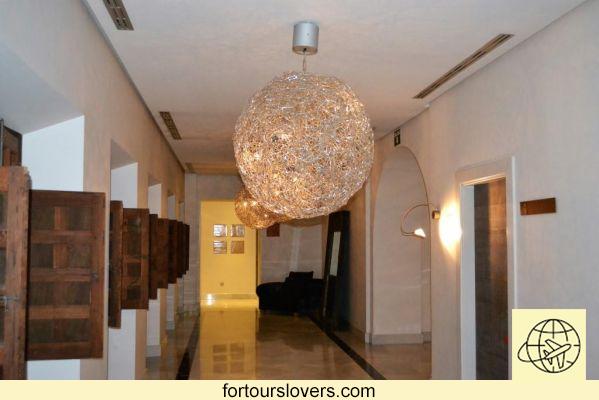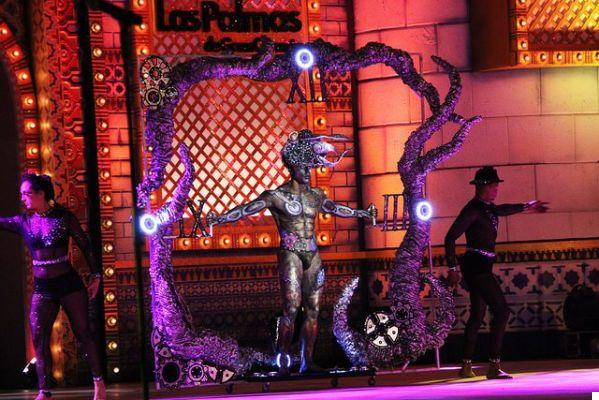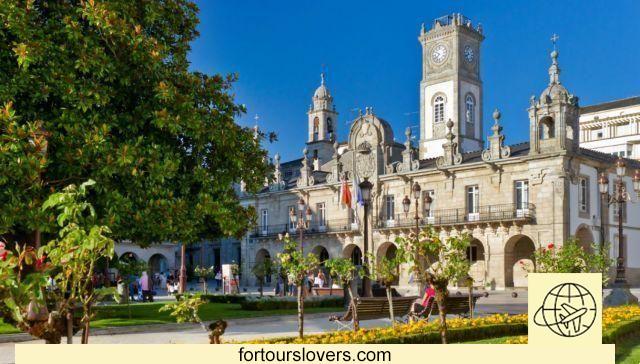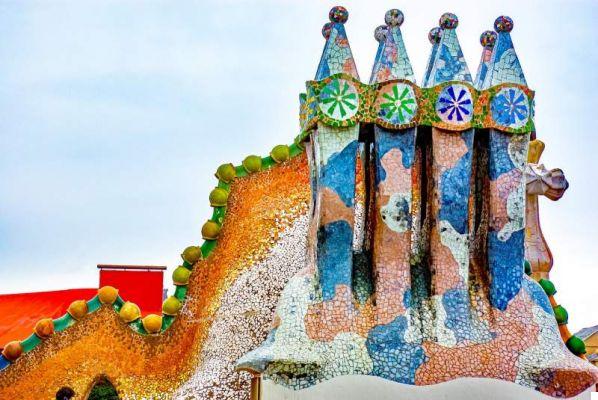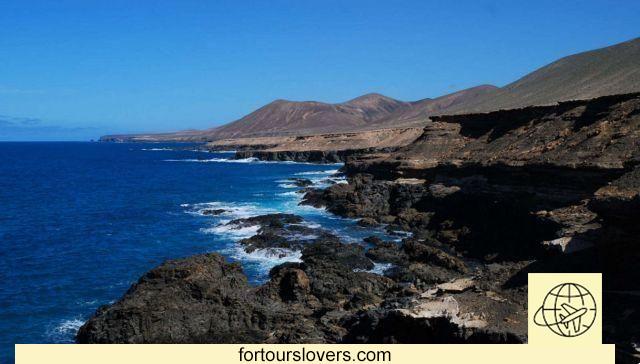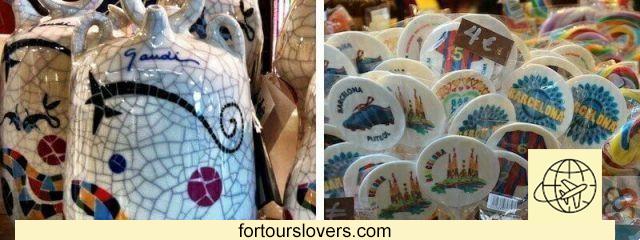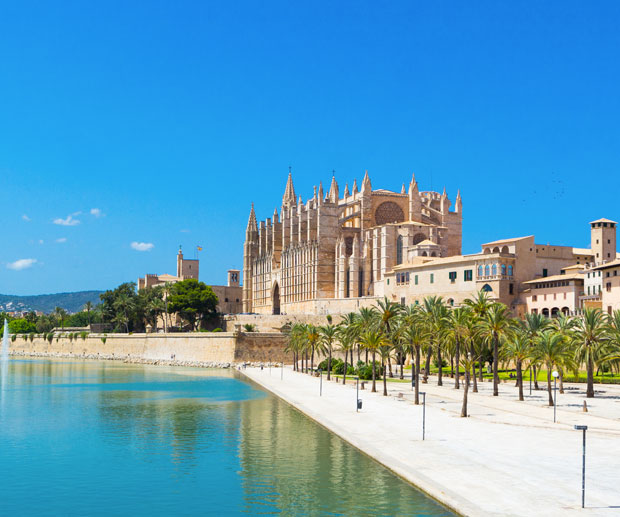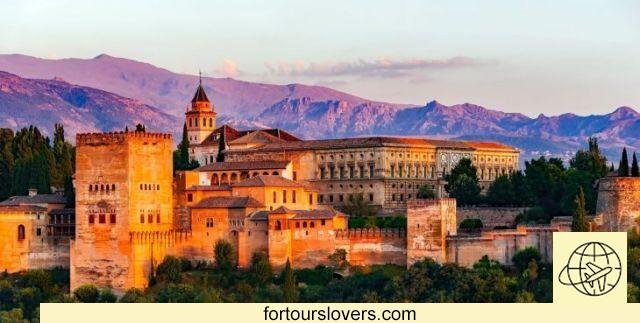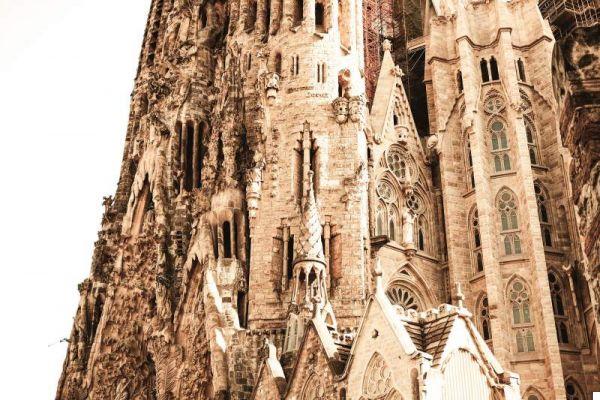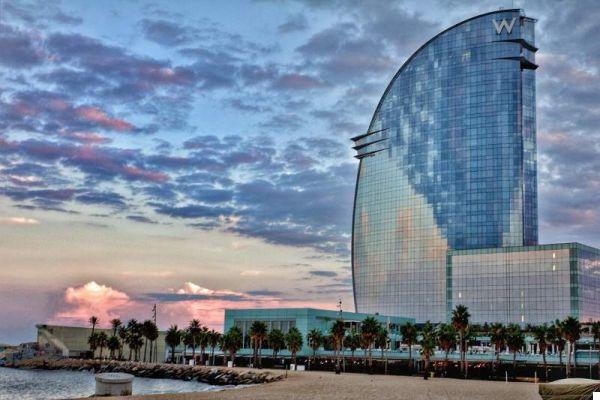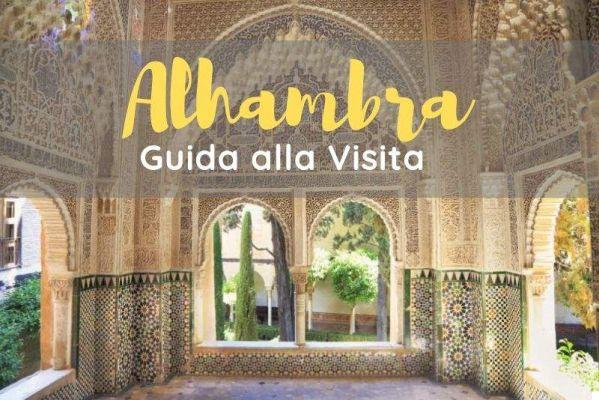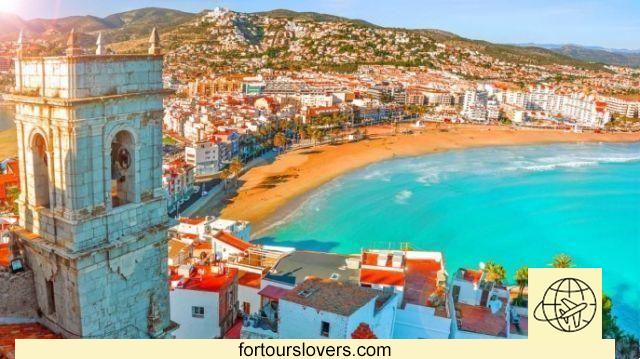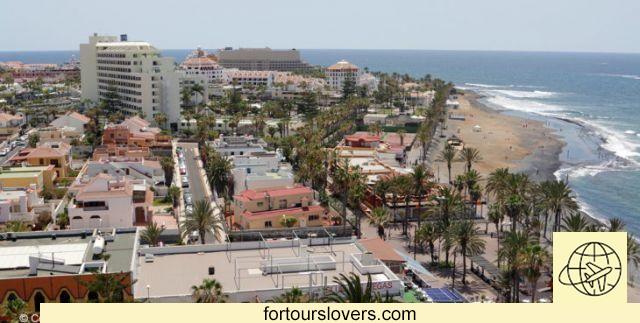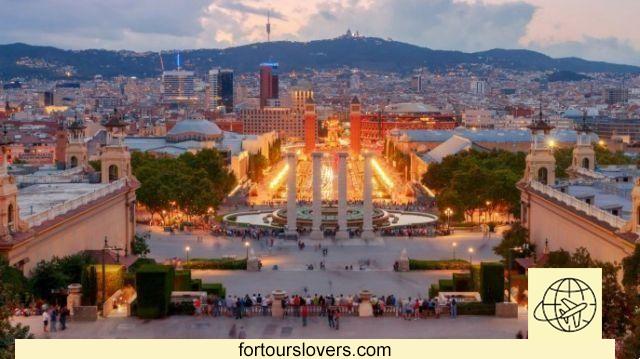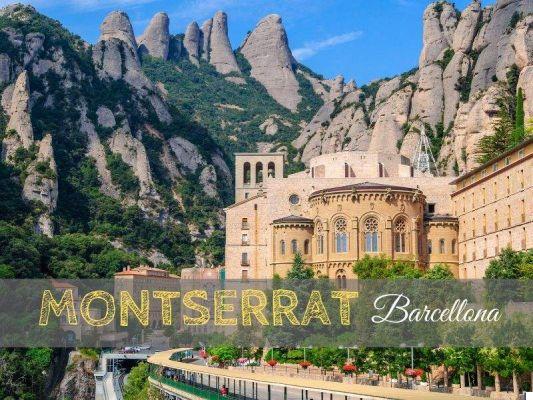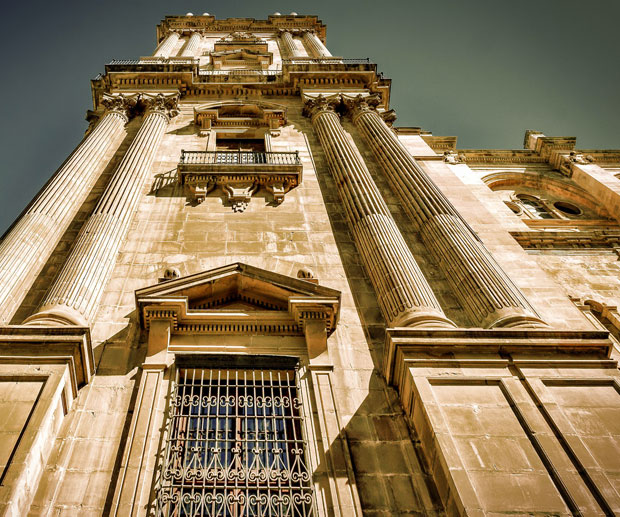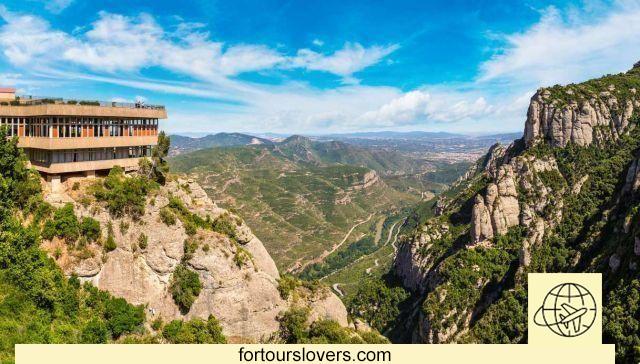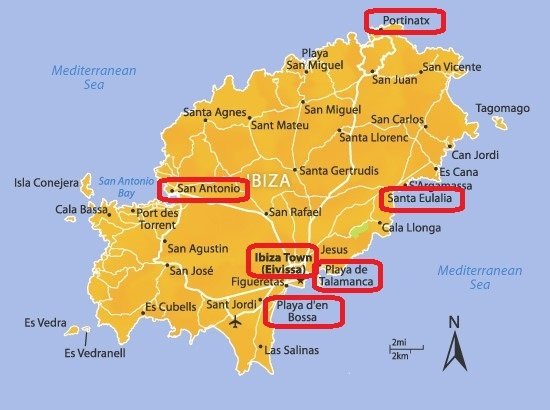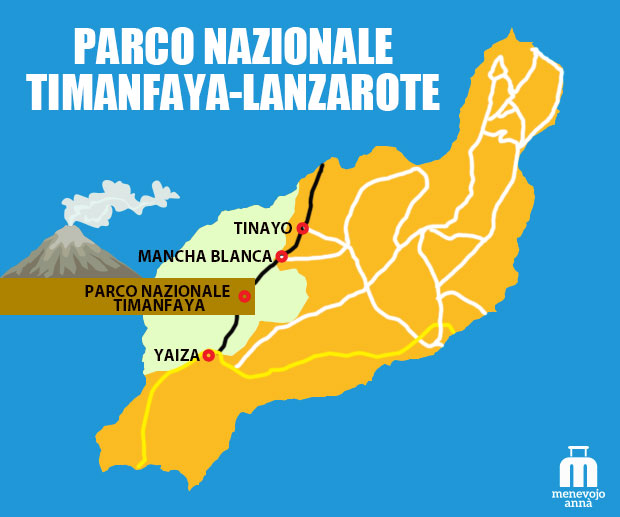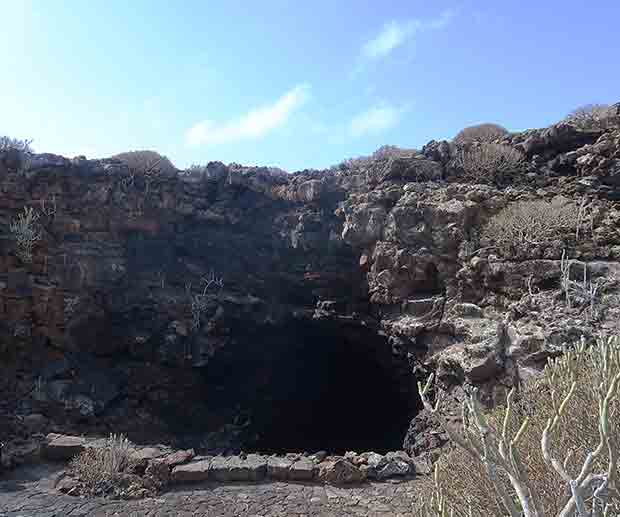Are you visiting sevilla for the first time and looking for the best things to see? Look no further.
After traveling to Andalucia and to help you plan your trip, I have prepared this guide on best places to visit in Seville and its surroundings.
In addition to the great attractions of Seville, in this post I will also give you a lot of useful tips to plan your trip: my experience is 100% personal and lived in first person.
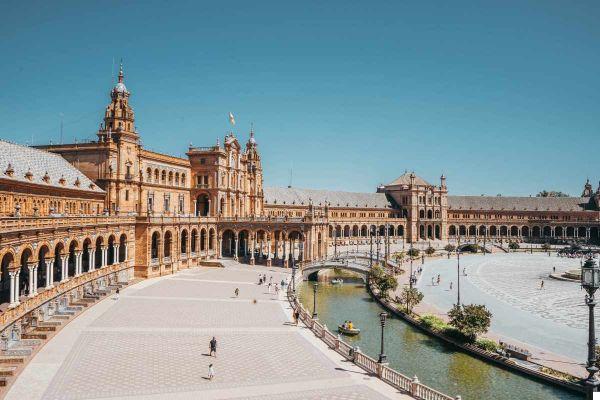
In this complete guide on what to see in Seville you will find a lot of information:
- What to see in Seville absolutely
- 1 - Seville Cathedral
- 2 - The Giralda
- 3 - Royal Alcazar of Seville
- 4 - Plaza de España
- 5 - Attend a flamenco show
- 6 - Triana neighborhood
- 7 - Santa Cruz neighborhood
- 8 - Golden Tower
- 9 - Metropol Parasol
- 10 - House of Pilatos
- 11 - General Archive of the Indies
- Other things to see in Seville
- 1 - Basilica de la Macarena
- 2 - Walk through the Maria Luisa Park
- 3 - Museum of Fine Arts
- 4 - Flamenco Dance Museum
- 5 - Piazza del Cabildo
- 6 - Palace of Las Dueñas
- 7 - Bullring
- 8 - El Arenal Market
- 9 - Hospital de Los Venerables Sacerdotes (Hospital of the Venerable Priests)
- What to see in Seville and surroundings
- What to see for FREE in Seville
- What to see in Seville month by month (events)
- What to see in Seville, 1, 2, 3 or 4 day itineraries
What to see in Seville absolutely
1 - Seville Cathedral
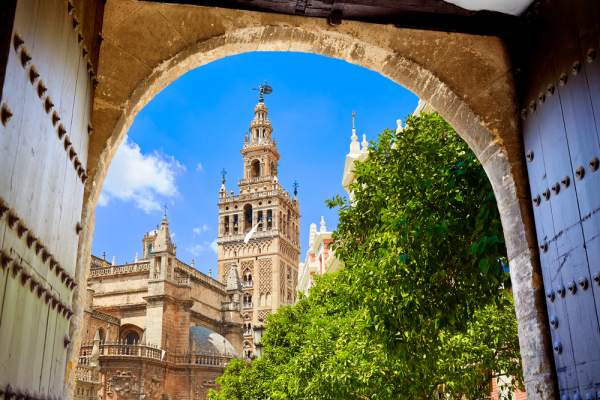
You can start your visit to Seville by entering the Cathedral, the largest Gothic temple in the world declared in 1987, next to the Real Alcazar and the Archivo de Indias.
The cathedral was built over a former mosque (of which the Patio de los Naranjos and the minaret - the Giralda) after the Moors were expelled by the Christians. The mosque was transformed and used as a church for about a century and a half and then, given the deterioration into which it spilled, it was razed and completely rebuilt.
Legend has it that the intentions of the clergy were precisely to build a cathedral that was considered grandiose, so grandiose that the creators and designers had to be considered crazy.
If the exterior impresses with its fantastic facade full of details and its 10 arcades, among which highlights the Puerta de la Asunción and Puerta del Perdón, the great interior with several jewels such as the choir, chapels, the magnificent Pala Maggiore, tombs of several kings of Castile and, above all, that of Christopher Columbus, supported by 4 figures representing the four kingdoms of Spain at the time.
To learn more, you can read my post about the curiosities of the Cathedral of Seville.
Visiting hours: Monday from 10:00 am to 3:30 pm; Tuesday to Saturday from 11:00 am to 5:00 pm and Sundays from 2:30 pm to 6:00 pm. In July and August it opens half an hour earlier and closes one hour later.
2 - The Giralda
Once inside the cathedral you can not avoid climbing the more than 100 meters of the Giralda, the bell tower of the cathedral and the old minaret of the mosque, which is a must-see monument for visitors to the city and also holds the title of UNESCO Heritage.
The climb is made up of ramps (not steps, is one of its peculiarities) that used to ride the sultan on horseback and once at the top you can enjoy a magnificent 360 degree panoramic view of the entire city.
If you also want to do the visit alone I recommend you to book your tickets in advance from here and choose the one that includes the guided visit to the roofs of the Cathedral. I did it and I loved it.
3 - Royal Alcazar of Seville
A few meters from the Cathedral is the imposing Real Alcazar of Seville, one of the most beautiful palaces in the world and another of the must-see places to visit in Seville.
The Alcazar is the Royal Palace of Seville. It is a huge palace of incredible beauty and although for its majesty and vastness it certainly cannot be compared to the Alhambrain Granada, in terms of beauty it certainly has nothing to envy.
This ancient palace, a World Heritage Site, was built by the Arabs from the year 913 and subsequently expanded by caliphs and kings for centuries.
Its peculiarity is, therefore, the mixture of different architectural styles: the Mudejar style, typical Andalusian style, baroque and classical styles blend harmoniously.
The visit lasts approximately 3 hours during which you absolutely cannot miss the Patiode las Doncellas, the Patio del Yeso, the Patio de las Muñecas, theRoyal Alcove, the Hall of the Ambassadors and the Hall of the Tapestries, to finish walking among orange trees, palm trees, fountains and ponds, in its beautiful gardens (which were protagonists in some scenes of the Throne of Swords).
Visiting hours of the Alcazar:
Visiting hours: from October to March from 9:30 to 18:00, the rest of the months it closes at 20:00.
For the visit it is advisable to buy tickets in advance and take advantage of the early hours of the morning.
4 - Plaza de España
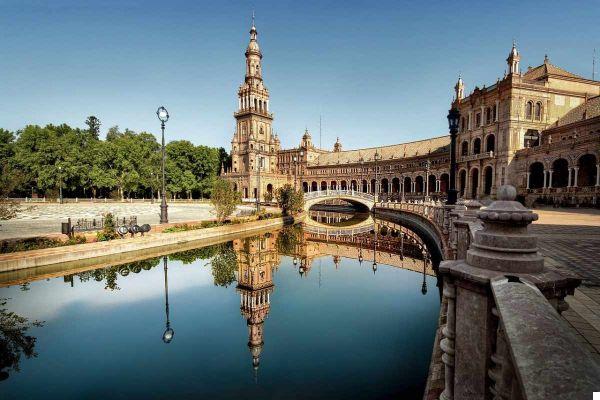
The Plaza de España is much more than a square.
In this huge space of more than 50,000 square meters and semicircular shape, stands a large central building flanked by two baroque towers and a canal of more than 500 meters long, which, if you wish, you can travel in a small boat.
The central square is "divided" in two by a majestic fountain, and the arcades are decorated with typical tiles.
One thing you can't forget is to have your photo taken on one of the tiled benches representing each of the provinces of Spain, stroll through the arcaded galleries, which have excellent coffered ceilings, and cross one of the four bridges, representing the ancient kingdoms of Spain.
Near this square there are several historic buildings such as the Royal Tobacco Factory, the Palace of San Telmo and the Hotel Alfonso XIII that if you can, I recommend you do not miss.
5 - Flamenco show
Surely if you are in Seville there is something you absolutely must do is to see a flamenco show, after all, this art was born in Andalusia.
Basically, the flamenco performance consists of three parts: singing, guitar and dance.
If you want to know more you can read my post on best flamenco shows in Seville.
There are tons of flamenco shows to choose from.
6 - Triana neighborhood
Crossing the Guadalquivir River from the Triana Bridge you will come to one of the most fascinating neighborhoods in the city, the Barrio de Triana.
Triana is an iconic and symbolic neighborhood of Seville: it is the neighborhood of the gypsies, the neighborhood where flamenco was born. The original Andalusian pottery originated in this district.
Triana is the perfect place to get lost: stroll aimlessly through its most famous streets such as Betis, Pureza or Rocio, and stop to observe, with your nose up, the colorful facades and ancient churches such as Santa Ana and Capilla de Los Marineros, until you reach its famous market, located next to the Castillo de San Jorge and Callejón de la Inquisición.
In addition to the walks, in the neighborhood you can also see how it preserves a long tradition of craftsmanship that is reflected in the various potters' workshops scattered along Calle Alfarería and the Centro de Alfarería de Triana (Triana Pottery Center).
Triana lives today two lives, the daytime with flowers, colors, pottery and the nighttime animated by authentic tapas bars and breweries where it is often possible to attend wonderful flamenco shows.
A good way to visit Triana is with a free tour.
If you want to go a little deeper and discover the best things to see in the Barrio de Triana, we have an article dedicated to this wonderful neighborhood of Seville.
7 - Santa Cruz Neighborhood
On leaving the Alcazar you can lose yourself in the alleys of the picturesque Barrio de Santa Cruz, located in the heart of the historic center and another of the best things to do in Seville.
Its labyrinthine streets will lead you to squares, inner courtyards, historic buildings, old churches and tapas bars, where you can savor the true essence of the city.
The Barrio de Santa Cruz is the architectural and cultural epitome of all Andalusia and southern Spain.
Walk out of Plaza de Santa Marta and Calle Mateos Gago overlooking the Giralda and pass places like Casa de Salinas, Calle Meson del Moro, until you reach the famous Calle Cruces, which has three forged crosses on marble columns and the Church of Santa Maria la. Blanca, an ancient synagogue.
Altri angoli da non perdere sono la Plaza de Santa Cruz con il famoso tablao di flamenco Los Gallos, il Callejón del Agua, la Calle Pimienta, la Plaza de Doña Elvira, la Calle Reinoso, il Patio de Banderas, la Plaza de los Refinadores. e l'Ospedale dei Venerabili Sacerdoti.
This neighborhood reborn is also a concentration of places to stop for a beer accompanied by tapas, perhaps under a roof studded with hanging Iberian hams.
There is nothing better in Seville than sampling some of the delicious tapas at Las Columnas bodega, Alvaro Peregil tavern or Bar Las Teresas, all considered by travelers and locals alike to be some of the best restaurants to eat at in Seville.
A particularly iconic place to attend a flamenco show is the Museo del Baile Flamenco which can be reached on foot from Barrio Santa Cruz in just under 10 minutes.
8 - Torre del Oro (Golden Tower)
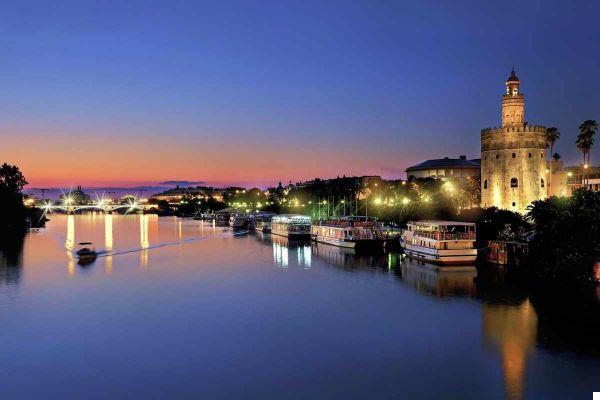
The Torre del Oro, located on the left bank of the Guadalquivir River and built by the Arabs in 1220, is another of Seville's emblems. Today it houses the Maritime Museum of Seville and from here you can enjoy one of the most beautiful views of the city and its river.
36 meters high, this tower was attached to the Torre de la Plata and formed an important part of the walls: in fact, from this tower the arrivals by river were controlled, and therefore served to protect the city from pirate attacks.
The name is due to the golden glow that the river reflects in its waters at sunset: the best perspective of the tower is from the San Telmo Bridge or taking a pleasant walk along the banks of the Guadalquivir.
Visiting hours: Monday to Friday from 9:30 to 18:45; Saturdays and Sundays from 10:30 to 18:45. On Mondays the entrance is free.
Another way to see the tower from a unique perspective is to book a river cruise, which departs from the pier of the Torre del Oro and is a must-see in Seville.
9 - Metropol Parasol
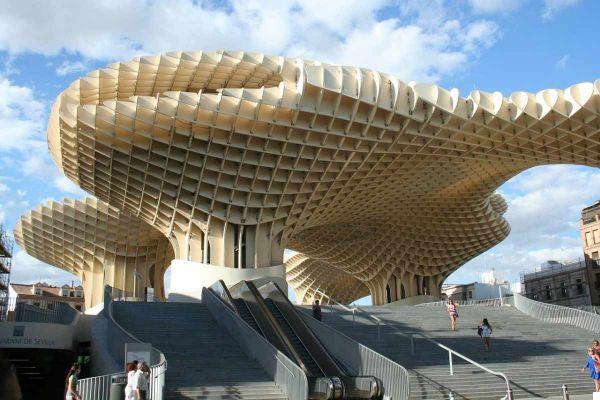
Among the best viewpoints to see in Seville, we must undoubtedly mention the sevilla mushrooms an architectural installation located in the Plaza de la Encarnación.
It is a wooden structure, designed and built by the German architect Jurgen Mayer and represents, as its name suggests, a huge umbrella.
It is also called Las Setas which in Spanish means mushrooms because the shape reminds them.
It was built to restore the splendor to a square that was in decline and instead represented a nerve center of the city.
The wooden structure is all "perforated" to allow the passage of air but to protect from the sun. Under the structure, musical events and shows are often organized and on the first floor of the structure there is another Seville food market.
Have a beautiful panorama of sevilla from a privileged point you can climb the structure and have the city at your feet.
The opening hours of the "mirador" (panoramic walkway) of the Metropol Parasol: from 09.30 to 23.00 hours.
10 - Pilate's House
The Casa de Pilato is a beautiful palace that combines Italian Renaissance and Spanish Mudejar styles and is another of the wonders to visit in Seville.
It is a former residence of the Dukes of Medinaceli, and around its two Andalusian-style courtyards you will find numerous works of art such as paintings, busts of Roman emperors, tapestries and two statues of the goddess Palas.
Visiting hours: daily from 9:00 to 18:00. Free on Mondays from 15:00 to 17:30.
11 - General Archive of the Indies
The ArchivoGeneral de Indias, housed in a magnificent Renaissance building and built in 1584 by King Philip I, is another of Seville's world heritage sites.
It is a historical archive that houses an incredible amount of historical documents dating back to the time of Spanish domination over America and inside are preserved ancient documents such as maps, treaties and drawings that refer to the conquest of America: there are texts of Christopher Columbus, Hernán Cortés or Francisco Pizarro.
Originally this building had another function, which was the Sala della Borsa, a market where commercial exchanges took place.
The archive is considered the largest library in Spain!
Visiting hours: Tuesday to Saturday from 9:30 am to 5:00 pm; Sunday from 10:00 am to 2:00 pm. Free pass.
Other things to see in Seville
1 - Macarena Basilica
A little far from the center of Seville, the Basilica de la Macarena contains the Virgen de la Esperanza Macarena, very special for Sevillians and Holy Week.
Next to the church is theMacarena Arch, which is, along with the Postigo del Aceite and Puerta de Córdoba, the only three remaining entrances to the ancient walls of Seville.
I recommend taking the 20-minute walk from the cathedral as it allows you to see other districts of the city and pass Chiesa di San Luis de los Franceses, a baroque jewel of the eighteenth century.
Back in the center you can go to Plazade San Lorenzo to see the Basilica of Jesus del Gran Poder and eat some delicious croquettes at Casa Ricardo.
2 - Stroll through Maria Luisa Park
After a visit to the Plaza de España, I suggest you take a relaxing stroll through the Parco Maria Luisa or Maria Luisa Park in Spanish, the green lung of the city.
The garden is dedicated to Maria Luisa de Bourbon who was the wife of the Duke of Montpellier who had expressly requested its construction in 1849. The Duke later donated part of the gardens to the city.
This park is perfect to disconnect from the bustle of the city, discovering natural spaces surrounded by trees and ponds combined with sculptures, wide avenues, monuments such as the one dedicated to Gustavo Adolfo Becquer, fountains in Arabic style and even green areas where you can have a picnic.
One of the most important places in the park is the Plaza de America, where the Archaeological Museum is located.
3 - Museum of Fine Arts
Considered the second most important art gallery in Spain, just behind the Prado Museum, the Museum of Fine Arts is another place to visit in Seville.
Located in the imposing building of the former Convent of La Merced Calzada, inside you will find works by great masters such as Goya and El Greco, as well as an important collection of Murillo.
Visiting hours: Tuesday to Saturday from 9:00 to 21:00 and Sundays from 9:00 to 15:00.
4 - Museum of Flamenco Dance
Flamenco in the Andalusian tradition is fundamental and, as I suggested before, if you are going to visit it is absolutely necessary that you know its history and attend at least one live show.
Il Museo del Baile Flamenco offers an interactive journey through the history of flamenco from its origins to the present day, focusing also on the history of the great artists.
Book HERE the show at the Museum of Flamenco Dance.
5 - Piazza del Cabildo
The Plaza del Cabildo located in front of the cathedral and the wide Avenida de la Constitución, is an oasis of peace in the historic center.
Once you enter through one of the three passages to this inner semicircular square with a large fountain in the center, you will discover a charming corner with buildings with large balconies and a series of arches supported by marble columns.
It is a real gem, not known to everyone, and really worth spending some time there, breathing in the intimate atmosphere.
On the first floor you will find several numismatic and philatelic stores and on Sundays there is a small market.
6 - Palace of Las Dueñas
Owned by the rich and powerful House of Alba, the Palacio de las Dueñas will make you fall in love at first sight with its Gothic-Mudejar and Renaissance style.
The Palace houses valuable works of art such as antique furniture and paintings that this family has accumulated over the centuries.
Other points of interest are its courtyards and gardens with thousands of plants and fruit trees such as orange and lemon trees.
Visiting hours: daily from 10:00 am to 8:00 pm from April to September; the rest of the year it closes at 6:00 pm.
- RESERVE HERE your entrance to the Palacio de las Dueñas
7 - Bullring
The Plaza de Toros is not a square, it is the arenawhere bullfights take place and its full name is Plaza de Toros de la Real Maestranza de Caballería de Sevilla.
Bullfighting is a tradition all over Spain, but Seville has a special place in this tradition: the Plaza de Toros de Sevilla is the oldest bullring in Spain and together with Ronda it fights for the primacy of the first bullfights.
Also part of the Plaza de Toros de Sevilla is a museum about the practice of bullfighting which is really very useful to understand the culture of this practice, why it has become a tradition and the curiosities related to bulls, bullfighters and bullfights.
Visiting hours of the Plaza de Toros: from 09.30 to 19.00 in winter and from 09.30 to 21.00 in summer.
Please note that during the bullfighting season the visiting hours are reduced. Consult the schedules here.
8 - El Arenal Market
A few minutes walk from the Plaza de Toros is the Mercato El Arenal: one of the markets of Seville.
This is not a tourist place: it is a place where the locals go shopping, where you can get to know the products of the land, where you can recognize the food and daily habits of the Sevillians.
Market hours: Sundays and Mondays from 09.00 to 19.00 hours while the rest of the days it is closed at noon. Adjust according to the days you will visit Seville.
9 - Hospital of the Venerable Priests
The Hospital de los Venerables Sacerdotes is a former hospice that has been converted into an art gallery containing some of the most valuable paintings in the city. It is within walking distance of the Cathedral and the Alcazar and is definitely worth a visit.
The collection it houses includes some masterpieces by Zurburán, Montañés, Murillo and Velázquez, the heavyweights of the Spanish art scene.
The highlight of the Hospital de los Venerables is the ornate baroque church.
Don't miss the beautiful courtyard with orange trees arranged around a sunken fountain.
- You can buy tickets here
What to see in and around Seville
Seville and its neighboring places are cultural, architectural and historical gems and Seville's location makes it an ideal starting point for exploring Andalusia.
All the things to see in Seville in this article are accessible by public transport, but some are further afield and it may be easier to hire a car or take a guided tour.
There are excellent one, two and three day tours departing from Seville.
Here then what to see in Seville:
1 - Italica
After completing the list of unmissable places to see in Seville and if you still have time left, I recommend you to visit Italica, located 10 kilometers from the center and with an important Roman site.
To get to this ancient Roman city, founded in 206 BC, and see jewels such as the Amphitheater, the baths or the beautiful mosaics, you can take the bus from the Plaza de Armas in Seville which takes 45 minutes or book this comfortable tour in ENGLISH.
2 - White Villages
The Pueblos Blancos or "white villages" are one of the most emblematic landscapes of Andalusia.
Characterized by whitewashed facades, narrow winding streets and steep cliffs, this 'collection' of typically Spanish villages is incredibly photogenic.
Although there are dozens of Pueblos Blancos, there are a few particularly beautiful ones, namely Arcos de la Frontera, considered the gateway to the Pueblos Blancos, mountainous Grazalema and prosperous Benaocaz.
When you are in Arcos de la Frontera, do not miss the mountainous walk to the imposing Church of San Pedro, whose presence dominates the landscape.
You can visit the Pueblos Blancos independently with your rental car or book HERE a guided tour in English that also includes Ronda.
3 - Ronda
Ronda is the third most visited city in Andalusia. And there is a reason: it is beautiful. Ronda is perched on a mountain slope carved out by the Guadalevín river. Ronda is synonymous with its spectacular 18th century bridge, the Puente Nuevo.
Ronda is also famous for being the birthplace of bullfighting.
4 - Granada
Granada is a charming city located in the foothills of the Sierra Nevada mountains and is world famous for its Alhambra.
The Alhambra sits on a hill and features Moorish royal palaces, sunny courtyards and fountains that were installed during the Nasrid dynasty.
Visiting Granada from Seville in one day is a trek, the two cities are about 250 km apart, tours usually take 12 to 13 hours with travel, but it is well worth it.
Book here your tour to visit Granada from Seville
5 - Doñana National Park
Wildlife lovers, especially those with a keen interest in birds, will be delighted to learn about the Doñana National Park.
The Doñana Park itself contains the mouth of the Guadalquivir River, so it is where the great river meets the ocean.
The Park is an incredible ecosystem where 4 different natural environments with completely different characteristics coexist and where if you are lucky, you may also have the chance to see the Iberian fox!
It is absolutely forbidden to visit the park independently and it is carried out with 4x4 vehicles and binoculars to try to "capture" (with your eyes, of course) any kind of animal.
Book HERE your visit to Doñana Park with ENGLISH speaking guide.
6 - El Rocío
Right in the heart of the Doñana Park is the charming village of El Rocio.
Whitewashed huts, charming sandy streets and the atmosphere of the Spanish Wild West make El Rocio a must-see even for first-timers to Andalusia.
The hermitage of El Rocio is one of the most important pilgrimage sites in Spain and certainly the most important in Andalusia.
There are no paved roads, which means that horses, carriages or sport utility vehicles are the preferred means of transportation.
7 - Cordoba
Cordoba is a beautiful old town to visit. There Mezquita (mosque) of Cordoba is the main attraction, but the whole city deserves at least a couple of days.
You can visit Cordoba from Seville by simply taking the AVE high speed train and the trip takes about 45 minutes, but I recommend you visit with a guide.
CLICK HERE to view and book the Cordoba tour from Seville
8 - Carmona
The small town of Carmona is picturesque and fascinating beyond imagination: it is the "true" image of what you think of when you think of Andalusia, with its beautiful Moorish churches and that atmosphere of a place rarely visited by tourists.
Located just 33 km northeast of Seville, Carmona is an easy day trip from Seville.
Carmona is also famous for its oil and wine production, so a tasting is a must!
Book HERE your excursion to Carmona from Seville (with guide in ENGLISH)
9 - Cadiz
Cadiz is one of Spain's best kept secrets, a thriving and vibrant city, rich in history and culture.
There are over 100 watchtowers along the bay of Cadiz, the most famous of which is the Tavira Tower.
The Cathedral of Cadiz is quite a sight.
Cadiz is famous for its amazing tapas, so be sure to try them.
Book HERE the Jerez Cadiz tour from Seville (with guide in ENGLISH)
What to see for FREE in Seville
By organizing your tour well, you can have the opportunity to visit some places in Seville. completely free.
First among the what to do in Seville for free There are definitely the two tours mentioned below.
In addition to the tours, there are a number of attractions that normally require an entrance ticket that on some days (usually Monday afternoon) are completely FREE:
- Seville Cathedral: free admission on Mondays from 4:30pm to 6:00pm.
- Giralda: of course, free entrance on Mondays.
- Alcazar: free entrance on Mondays in the last hour that you can enter. Considering the beauty and extent of what can be seen in this building, one hour is very short and in any case the entrance must be booked online in any case.
- Bullring: free admission on Mondays
- Torre dell'Oro: free admission on Mondays.
- Archivo General de Indias can be visited for free every day.
- Palacio de Las Dueñas: free admission on Mondays
- Palacio de San Telmo (headquarters of the Junta de Andalucía): always free, but reservations are still required.
What to see in Seville month by month
Seville is a particularly lively and, pass me the term, party city. In fact, depending on the time of year you go, in addition to the classic things to see in Seville that I listed above, you might find unexpected events.
Below are the most important events in and around Seville, dates are sometimes variable, so always check before you go.
- January: Capodanno, Cabalgatas de los reyes magos (5 e 6 Gennaio);
- March / April: Holy Week;
- April: Seville April Fair;
- May June: pilgrimage of El Rocio (El Rocio), San Fernando (May 30);
- June: Corpus Christi (June 15);
- July: Velá de Santa Ana (26th July);
- August: Procession of the Virgen de los Reyes (August 15);
- September: Guadalquivir Night Marathon, Flamenco Biennial (every two years);
- October: Halloween (October 31);
- November: Seville European Film Festival;
- December: Feast of the Immaculate Conception, Christmas Eve, New Year's Eve.
What to see in Seville, 1, 2, 3 or 4 day itineraries
What to see in Seville in 1 day
One day is really too little to visit Seville, but this itinerary of what to see in Seville in one day will help you make the most of your time.
Keep in mind that you will have to run around enough.
- In the morning, after breakfast, head straight to Plaza de España.
- Continue your visit withAlcázarde sevilla.
- For lunch, go to Santa Cruz neighborhood where you will find many delicious places to stop for a bite to eat. After lunch, take a quick stroll through the Barrio starting from Plaza de Santa Maria and Calle Mateos Gago with views of the Giralda. During this tour you will pass places like Casa de Salinas, Calle Meson del Moro, the old synagogue and the Church of Santa Maria la Blanca, until you stop at the touristy Calle Cruces.
- Seville Cathedral and Giralda
- After your tour, go to see the Torre del Oro (Golden Tower).
- At sunset you can take a romantic walk along the banks of the Guadalquivir to Ponte Isabella II to see the Torre de Oro reflected in the river. If you have time, you can book a river cruise, which is a very good idea!
What to see in Seville in 2 days
If you have two days to see Seville, you can change your itinerary a bit to see things at a much more leisurely pace.
If you want a more detailed guide of the best things to do in Seville in 2 days you can check it out here.
The first day we changed our itinerary, leaving the Alcazar for the next day, replacing it with.
Day 1:
- Seville Cathedral and Giralda
- Archivo General de Indias: really worth to go there.
- Santa Cruz neighborhood
- Golden Tower
- Mini cruise on the Guadalquivir river
- In the evening flamenco show in Triana neighborhood
Day 2:
- Alcazar of Seville
- Bullring
- Maria Luisa Park
- Plaza de España
- Metropol Parasol or The Mushrooms of Seville
What to see in Seville in 3 days
3 days is ideal to visit Seville. If you want a more precise itinerary and would like more information, please read my article on what to see in Seville in 3 days.
Day 1:
- Seville Cathedral
- Giralda
- General Archive of the Indies
- Santa Cruz neighborhood
- Afternoon Flamenco show in Seville
Day 2:
- Alcazar of Seville
- Bullring
- El Arenal market
- Triana neighborhood
- Metropol Parasol or Las Setas of Seville
- In the afternoon tapas tour
Day 3:
- Maria Luisa Park
- Plaza de España
- Golden Tower of Seville
- Mini cruise on the Guadalquivir river
- Triana neighborhood
What to see in Seville in 4 days
If you even have 4 days in Seville, keep the itinerary in 3 days (the one I did) and dedicate the fourth day to Seville surroundings.
Three of the best tours I recommend (you can do one, choose carefully):
- Pueblos Blancos and Ronda
- Excursion to Jerez and Cadiz
- Excursion to the Alhambra in Granada
- Excursion to Doñana
- Excursion to Italica
- Excursion to Cordoba




